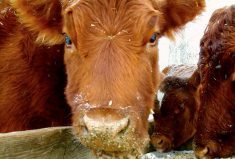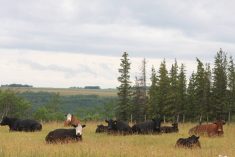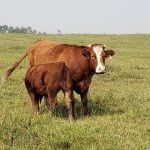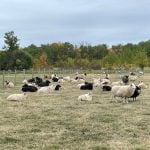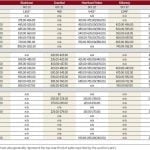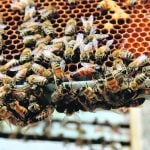Hope deferred makes the heart sick, goes the old proverb, and there is no greater example than in the cattle complex. Placid feedlot operators watched in dismay as fed cattle sold in the range of $133-$135 this past week, down approximately $6 from week-ago levels and $10 below breakeven pen closeout values. The stomach-churning fed market quickly spilled over into auction barns across the Prairies. Compared to seven days earlier, western Canadian feeder cattle traded $5 to as much as $10 lower. Yearlings were mildly supported early in the week as barley prices eroded. However, once the fed trade developed, cattle buyers couldn’t garner any interest. Labour under afflictions took on new meaning, especially with fresh calves coming onstream. This was the first significant week for calves and the price structure was a bitter pill to swallow for the farmer/cow-calf operator. The rice-growing conditions this past summer tempered forage quality, and now calf prices are nearly 40 per cent off from September 2015.
Read Also

U.S. grains: Soy futures set 15-month high after China agrees to purchases
U.S. soybean futures reached a 15-month high on Thursday after President Donald Trump’s administration said top-importer China agreed to buy tens of millions of tons of American crops in the next few years as part of a trade truce.
Larger-frame lower-flesh mixed steers averaging just over 900 lbs. traded as high as $175 but 900- to 950-weights were actively moving from $162 to $170. Higher-quality mixed steers averaging 800 to 850 lbs. were quoted in the range of $172-$180 with the top end at $184. Sharper discounts were noted on fleshier cattle. The bulk of trade for 800- to 850-lb. heifers occurred in the range of $163-$168 with the top end reaching $172. Steer calves weighing 600 to 650 lbs. were quoted from $202-$212; heifers averaging 650 lbs. were quoted from $185 to $190. There were some large swings in prices depending on the region which made the market hard to define. Auction markets with smaller volumes reported prices $8-$10 below values quoted above, especially in Manitoba and Saskatchewan.
Late August and first-half September is a period of seasonal high beef (and pork) production. Weekly beef production should decline in October and demand tends to improve in November and December. This should bode will for the feeder market late in the year. In the feeder market, it pays to be contrarian and I believe we’re nearing the lows for replacement cattle.
— Jerry Klassen is manager of the Canadian office for Swiss-based grain trader GAP SA Grains and Produits. He is also president and founder of Resilient Capital, which specializes in proprietary commodity futures trading and commodity market analysis. Jerry owns farmland in Manitoba and Saskatchewan but grew up on a mixed farm/feedlot operation in southern Alberta, which keeps him close to the grassroots level of grain and cattle production. Jerry is a graduate of the University of Alberta. He can be reached at 204-504-8339.






